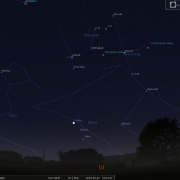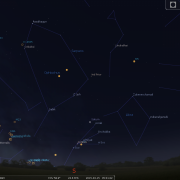In this month's Sky Notes:
Planetary Skylights


 Venus (left) and Mars (right) both lie in the early evening sky over in the South-West and both have encounters with Uranus (lower left). Brilliant Venus passes the green gas giant on the 4th, when just 5 arc minutes separate them. Venus lies upper right of Uranus. Mars has a turn on the 11th, when 17 arc minutes separate it from Uranus, which will lie to the lower left. Venus will of course be obvious to spot, dominating that part of the sky. Mars, at magnitude 1.5, should also be visible to the naked eye, but you will require binoculars (preferably a telescope) to spot Uranus at magnitude 6.2. The crescent moon lies below Mars on the 21st and below Venus the following evening.
Venus (left) and Mars (right) both lie in the early evening sky over in the South-West and both have encounters with Uranus (lower left). Brilliant Venus passes the green gas giant on the 4th, when just 5 arc minutes separate them. Venus lies upper right of Uranus. Mars has a turn on the 11th, when 17 arc minutes separate it from Uranus, which will lie to the lower left. Venus will of course be obvious to spot, dominating that part of the sky. Mars, at magnitude 1.5, should also be visible to the naked eye, but you will require binoculars (preferably a telescope) to spot Uranus at magnitude 6.2. The crescent moon lies below Mars on the 21st and below Venus the following evening.
 Anyone who ventures out into the evening twilight cannot fail to notice the two planetary beacons of Venus and Jupiter facing each other on opposite sides of the sky. So as Venus slides down into the west, Jupiter rises into the east arcing across the sky as the night progresses. When conditions allow you should never miss an opportunity to observe Jupiter, even if it is with just binoculars. The quicker than expected rotation (around 10hrs) of this huge gas world, mean visible cloud features may be seen to change (including the Great Red Spot) over an observing session. The dance of the Galilean moons also has its fascination. The gibbous moon passes the vicinity of Jupiter on the 2nd and 3rd of March.
Anyone who ventures out into the evening twilight cannot fail to notice the two planetary beacons of Venus and Jupiter facing each other on opposite sides of the sky. So as Venus slides down into the west, Jupiter rises into the east arcing across the sky as the night progresses. When conditions allow you should never miss an opportunity to observe Jupiter, even if it is with just binoculars. The quicker than expected rotation (around 10hrs) of this huge gas world, mean visible cloud features may be seen to change (including the Great Red Spot) over an observing session. The dance of the Galilean moons also has its fascination. The gibbous moon passes the vicinity of Jupiter on the 2nd and 3rd of March.
 Lovely Saturn is visible in the dawn sky to the South-East and South not that far above Antares in Scorpius. The moon lies nearby on the 12th.
Lovely Saturn is visible in the dawn sky to the South-East and South not that far above Antares in Scorpius. The moon lies nearby on the 12th.
Meteor Activity

No major showers. However at the very end of March you may spot a few Viginids, which are very slow moving and have long paths. As usual early morning hours are more favourable
Comet Lovejoy 2014
The comet should still be visible through binoculars and telescopes as it heads into Cassiopeia high to the North-West.
The comet is now circumpolar so you have all night to spot it.
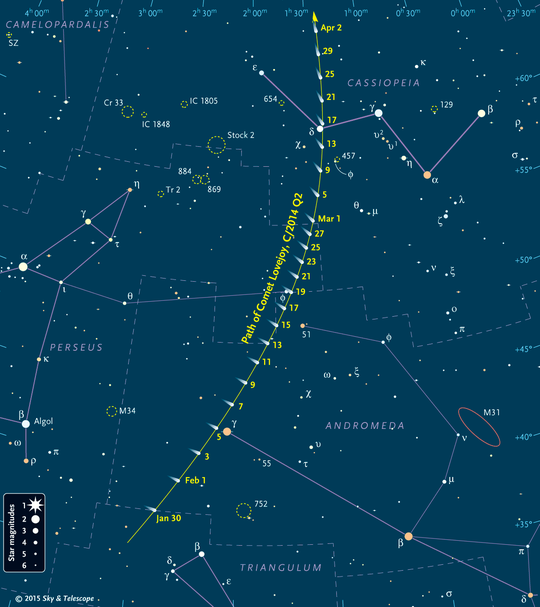
Position of Comet Lovejoy January to Early April 2015. Click for full-sized image
February 2015 Sky Charts
Click each image to see a full-size Sky Chart:
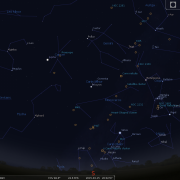 |
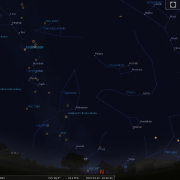 |
| Looking South Mid March - 20:00h |
Looking North |
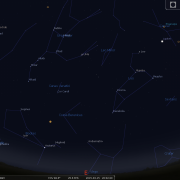 |
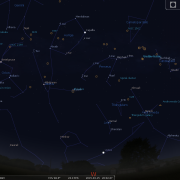 |
| Looking East Mid March - 20:00h |
Looking West Mid March - 20:00h |
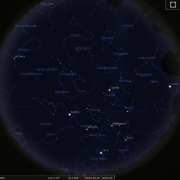 |
|
| Overview Mid March - 20:00h |
Image Credits:
- Planets and Comets where not otherwise mentioned: NASA
- Comet Lovejoy Position: Sky & Telescope Magazine
- Sky Charts: Stellarium Software
- Log in to post comments

